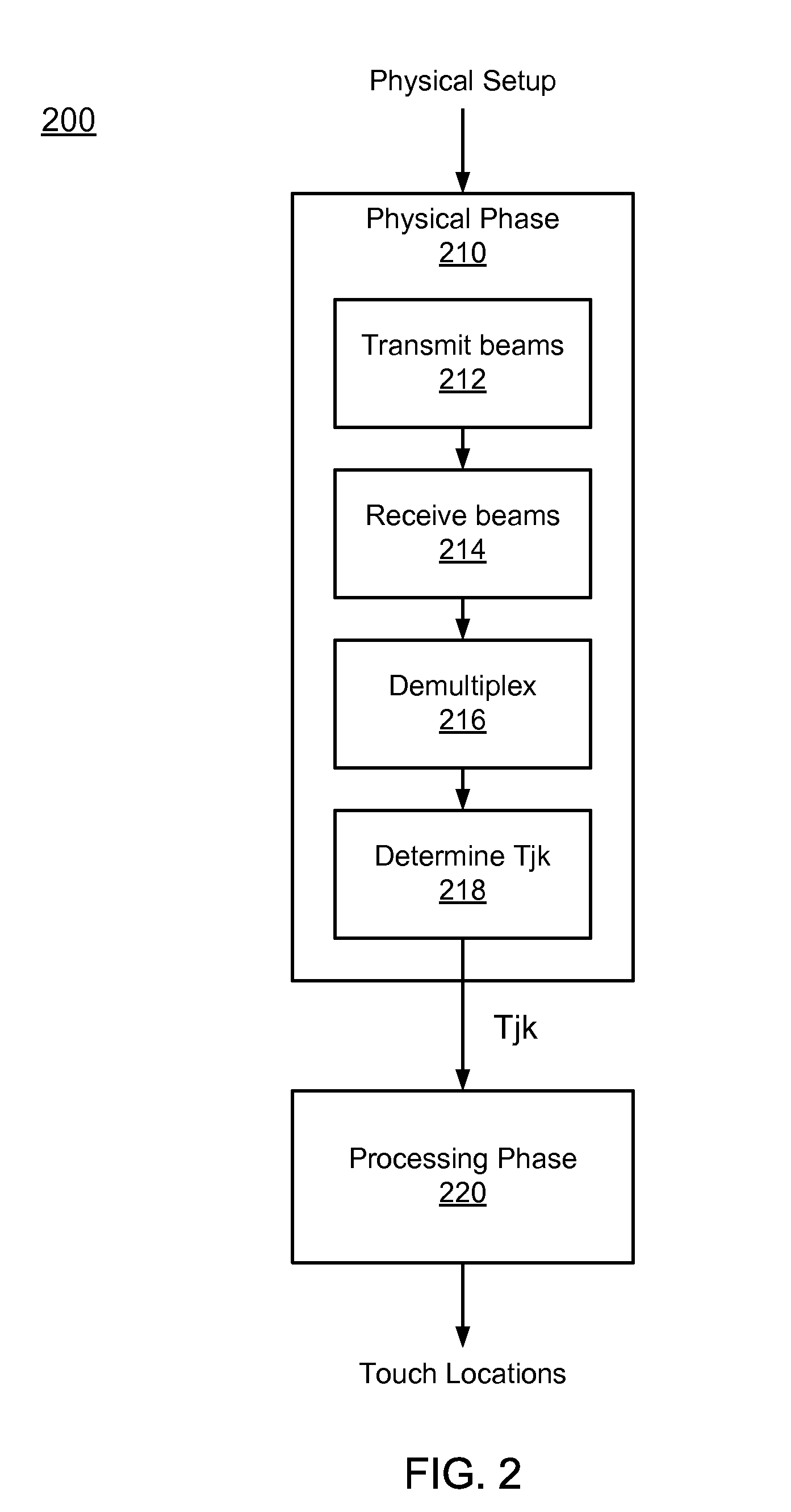Augmented optical waveguide for use in an optical touch sensitive device
a technology of optical waveguides and optical touch, which is applied in the direction of user-computer interaction input/output, instruments, electric digital data processing, etc., can solve the problems of inability or difficulty to handle multitouch events, not scaling well to larger screen sizes as in displays used with laptops or even desktop computers,
- Summary
- Abstract
- Description
- Claims
- Application Information
AI Technical Summary
Benefits of technology
Problems solved by technology
Method used
Image
Examples
Embodiment Construction
I. Introduction
[0036]A. Device Overview
[0037]FIG. 1 is a diagram of an optical touch-sensitive device 100, according to one embodiment. The optical touch-sensitive device 100 includes a controller 110, emitter / detector drive circuits 120, and a touch-sensitive surface assembly 130. The surface assembly 130 includes an active area 131 over which touch events are to be detected. For convenience, the active area 131 may sometimes be referred to as the active surface or surface, as the active area itself may be an entirely passive structure such as an optical waveguide. The assembly 130 also includes emitters and detectors arranged along the periphery of the active area 131. In this example, there are J emitters labeled as Ea-EJ and K detectors labeled as D1-DK. The device also includes a touch event processor 140, which may be implemented as part of the controller 110 or separately as shown in FIG. 1. A standardized API may be used to communicate with the touch event processor 140, for...
PUM
 Login to View More
Login to View More Abstract
Description
Claims
Application Information
 Login to View More
Login to View More - R&D
- Intellectual Property
- Life Sciences
- Materials
- Tech Scout
- Unparalleled Data Quality
- Higher Quality Content
- 60% Fewer Hallucinations
Browse by: Latest US Patents, China's latest patents, Technical Efficacy Thesaurus, Application Domain, Technology Topic, Popular Technical Reports.
© 2025 PatSnap. All rights reserved.Legal|Privacy policy|Modern Slavery Act Transparency Statement|Sitemap|About US| Contact US: help@patsnap.com



